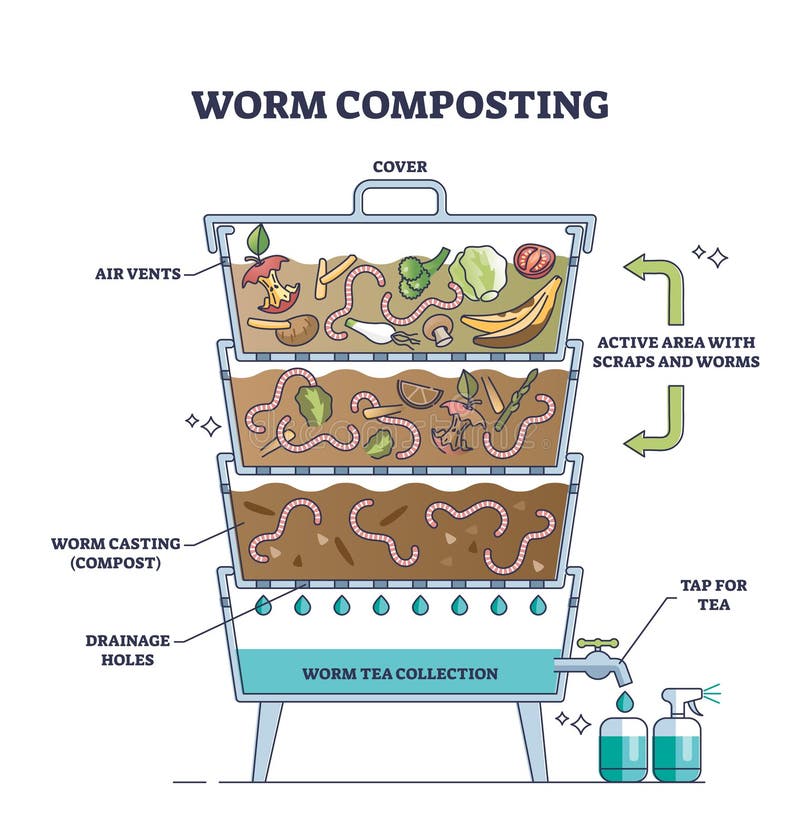Urban Worm Composting Guide

Urban Worm Composting Guide: Your Key to Sustainable Living
Worm Composting in Urban Areas: The Basics
Ever considered turning your kitchen scraps into nutrient-rich fertilizer right in your apartment? Welcome to the world of worm composting in urban areas, also known as vermicomposting. It's not just about waste reduction; it's about creating a sustainable cycle in your own home.
Why Vermicomposting in the City?
Imagine this: instead of tossing your banana peels and coffee grounds into the trash, you feed them to a bunch of tiny, hardworking pets. In return, they give you the best organic fertilizer for your urban farming projects. Sounds like a sweet deal, right? Plus, you're doing your bit for the environment by reducing waste.
Getting Started: The Compost Bin
First things first, you need a home for your worms. A compost bin can be anything from a simple plastic container to a fancy multi-tiered worm condo. Just ensure it's well-ventilated and not too deep, as worms prefer to live within 12 inches of the surface.
Meet Your New Pets: Red Wigglers
Not all worms are created equal when it comes to vermicomposting. Red wigglers (Eisenia fetida) are the superstars here. They're voracious eaters and thrive in decomposing organic matter. You can find them at bait shops or order them online.
Feeding Your Worms: The Dos and Don'ts
Worms have a pretty refined palate. They love fruit and veggie scraps, coffee grounds, and tea bags. But there are some foods you should avoid:
- No meat or dairy: These can create odors and attract pests.
- No citrus or spicy foods: Worms find these too acidic.
- No oily foods: These can make the bin too moist and attract pests.
Setting Up Your Worm Bin
- Bedding: Start with a layer of bedding material like shredded newspaper, cardboard, or coconut coir.
- Worms: Add your red wigglers. A pound of worms can process about half a pound of food scraps per day.
- Food: Bury the food scraps under the bedding. This helps control odors and pests.
Harvesting Your Compost
After a few months, you'll notice the bedding has turned into dark, crumbly compost. Here's how to harvest it:
- Push the compost to one side of the bin and add fresh bedding to the other side.
- Start feeding the worms on the fresh bedding side. They'll migrate over, leaving the finished compost worm-free.
- Collect the compost and use it in your organic gardening projects.
Troubleshooting Common Problems
- Foul odors: This usually means the bin is too wet or you've added something you shouldn't. Check your bin's moisture and what you're feeding your worms.
- Fruit flies: These can be a nuisance but are harmless. To deter them, bury food scraps well and keep a trap nearby.
- Worms trying to escape: If your worms are climbing the walls, it might be too wet or too acidic in the bin. Check your conditions and adjust as needed.
Urban Farming with Vermicompost
Vermicompost is like black gold for your plants. It's rich in nutrients and improves soil structure. Use it to top-dress your houseplants, boost your urban garden, or even share it with neighbors and community gardens.
Waste Reduction: Doing Your Part
By composting at home, you're not just creating amazing fertilizer; you're also reducing the amount of waste sent to landfills. According to the EPA, food scraps and yard waste make up 20 to 30 percent of what we throw away. Imagine the impact if we all composted instead!
Conclusion
Vermicomposting in urban areas is more than just a hobby; it's a step towards sustainable living. It's a way to connect with nature, reduce waste, and create something valuable from what others might consider trash. So why not give it a try? Your plants (and the planet) will thank you!
FAQs
How many worms do I need to start? A good rule of thumb is 1,000 red wigglers (about a pound) per half pound of daily food waste.
Can I keep my worm bin indoors? Absolutely! Worm bins can be kept under the sink, in a closet, or even on the counter. Just keep it between 55-77°F (13-25°C).
What if I go on vacation? Worms can go a few weeks without fresh food. Just make sure their bedding is moist before you leave.
Can I add new worms to my bin? Yes, you can. It's a great way to boost your bin's processing power. Just make sure to introduce them gradually.
What should I do with excess worms? Share them with friends, use them as fishing bait, or start a new bin. Some people even blend them into a nutritious "worm smoothie" for their plants.
0 Response to " Urban Worm Composting Guide"
Post a Comment